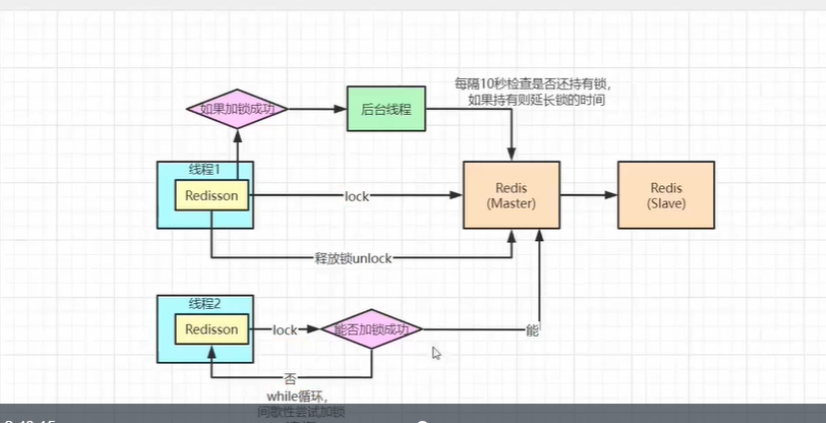使用Redis实现分布式锁
以下是使用Redis在高并发下实现的一把分布式锁示例,直接上代码,两种方式:
实现方式一:直接用Redis当分布式锁
@RequestMapping("/deduct_stock")
public String getbykey(String key) {
String lockKey = "product" + key;
String uuid = UUID.randomUUID().toString();
//最简单的分布式锁
Boolean locked = stringRedisTemplate.opsForValue().setIfAbsent(lockKey, uuid,30,TimeUnit.SECONDS);
if(!locked){
return "error_code";
}
try{
synchronized (this) {
String result = stringRedisTemplate.opsForValue().get(key);
if (StringUtils.hasLength(result)) {
int number = Integer.parseInt(result);
if (number > 0) {
number--;
stringRedisTemplate.opsForValue().set("stock", number + "");
System.out.println("库存为:" + number);
}else{
System.out.println("库存不足");
}
}
return result;
}
}finally {
if(uuid.equals(stringRedisTemplate.opsForValue().get(lockKey))) {
stringRedisTemplate.delete(lockKey);
}
}
}
实现方式二:使用Redisson插件
1、引入依赖:
<dependency>
<groupId>org.redisson</groupId>
<artifactId>redisson</artifactId>
<version>3.6.5</version>
</dependency>
2、初始化配置bean
Component @Configuration public class ApplicationConfig { @Value("${spring.redis.host}") private String redisHost; @Value("${spring.redis.port}") private String port; @Value("${spring.redis.password}") private String password; @Bean public Redisson getRedisson() { Config config = new Config(); config.useSingleServer().setAddress("redis://" + redisHost + ":" + port).setPassword(password); return (Redisson) Redisson.create(config); } }
3、使用
String lockKey = "product" + key; RLock redissonLock = redisson.getLock(lockKey); redissonLock.lock(); try{ synchronized (this) { String result = stringRedisTemplate.opsForValue().get(key); if (StringUtils.hasLength(result)) { int number = Integer.parseInt(result); if (number > 0) { number--; stringRedisTemplate.opsForValue().set("stock", number + ""); System.out.println("库存为:" + number); }else{ System.out.println("库存不足"); } } return result; } }finally { redissonLock.unlock(); }
4、Redisson分布式锁原理

没有什么优雅的代码比空代码的执行效率更高




【推荐】国内首个AI IDE,深度理解中文开发场景,立即下载体验Trae
【推荐】编程新体验,更懂你的AI,立即体验豆包MarsCode编程助手
【推荐】抖音旗下AI助手豆包,你的智能百科全书,全免费不限次数
【推荐】轻量又高性能的 SSH 工具 IShell:AI 加持,快人一步
· 无需6万激活码!GitHub神秘组织3小时极速复刻Manus,手把手教你使用OpenManus搭建本
· C#/.NET/.NET Core优秀项目和框架2025年2月简报
· Manus爆火,是硬核还是营销?
· 终于写完轮子一部分:tcp代理 了,记录一下
· 【杭电多校比赛记录】2025“钉耙编程”中国大学生算法设计春季联赛(1)